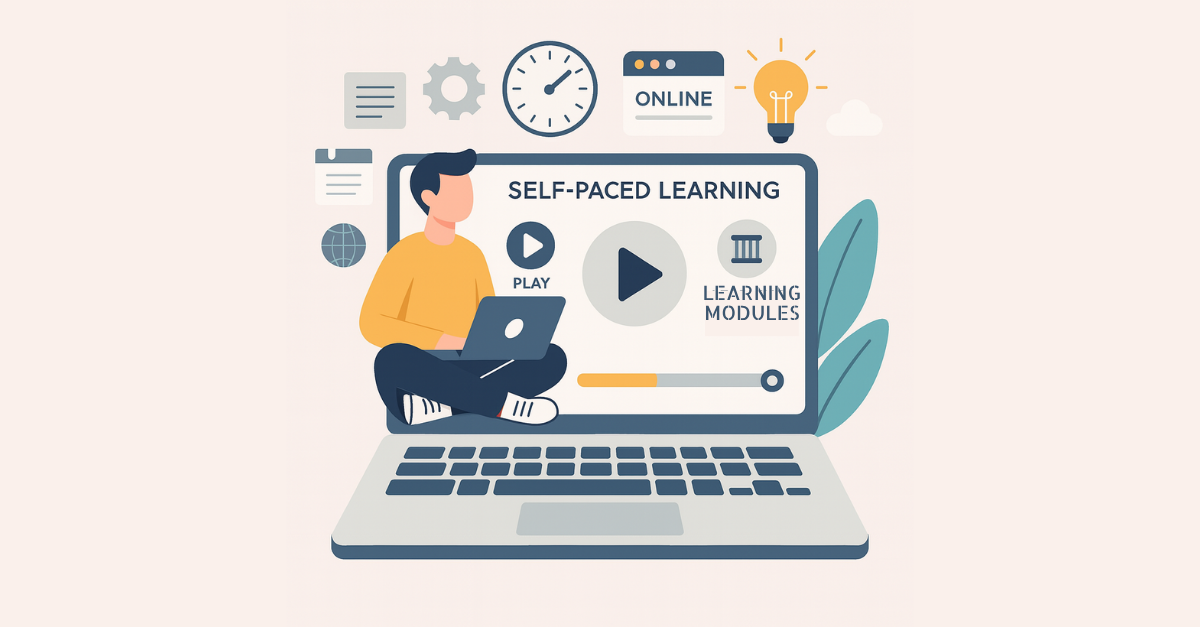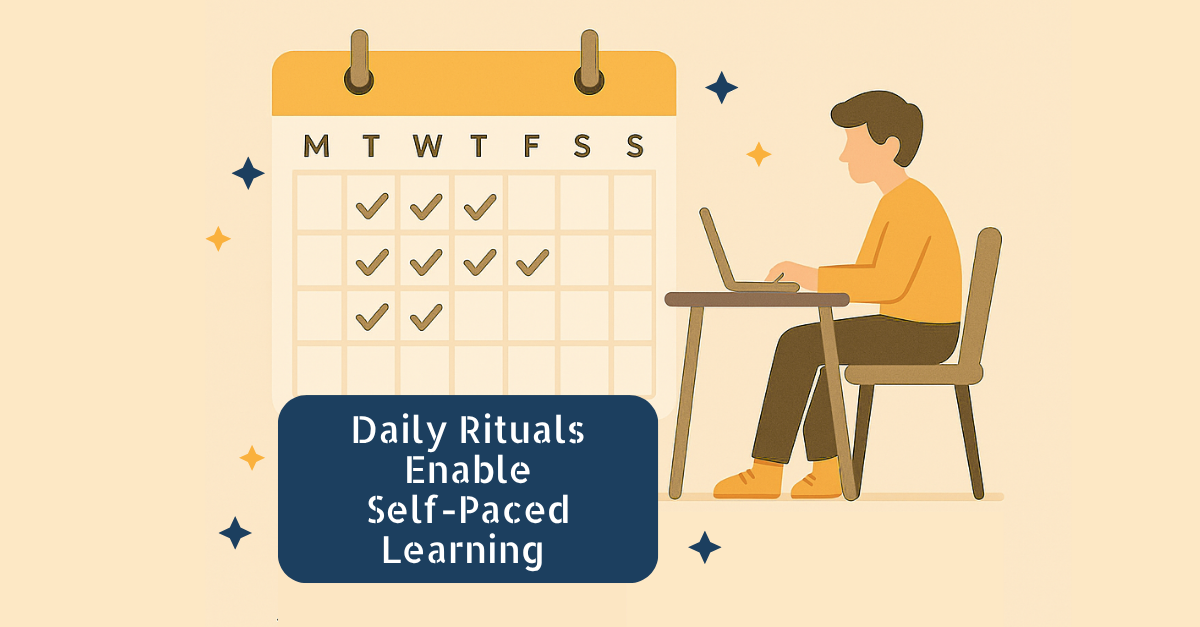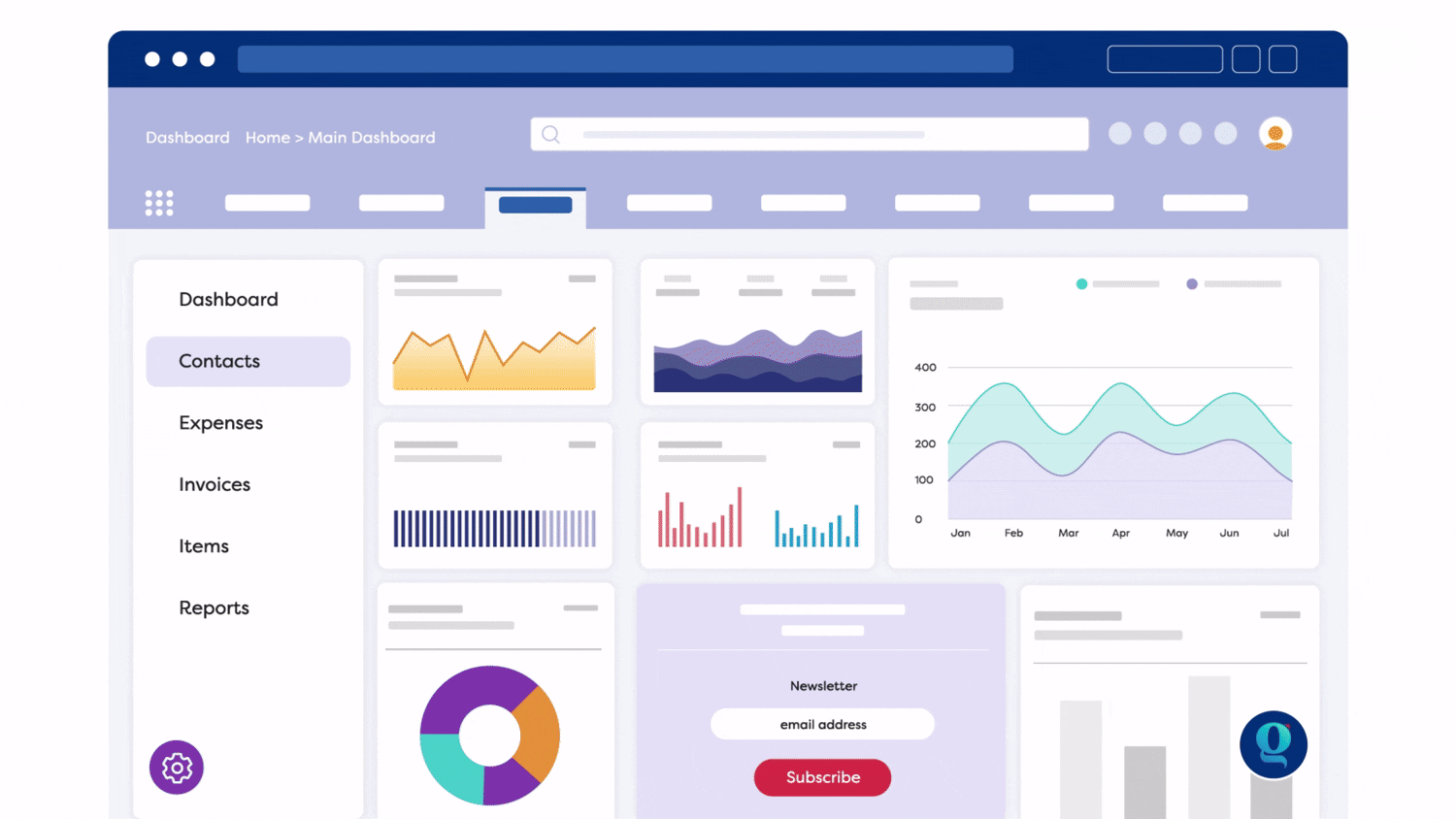Self-paced learning has become an important shift in how big companies approach upskilling and reskilling.
Unlike traditional classroom-style training, it gives employees the freedom to learn at their own pace, on their own time, without disrupting their day-to-day work.
This shift has been made possible by digital tools. In fact, nearly 80% of businesses today have already adopted online learning platforms to support everything from virtual onboarding to hybrid workforce enablement.
So why are more organizations embracing this method? Because it's scalable, consistent, and accessible way to deliver high-quality training across teams and geographies.
In this blog, we’ll break down what self-paced learning is, how it works in modern organizations, and why it’s becoming essential to both employee growth and business success.
You’ll learn:
- What self-paced learning really means
- What are some use cases of self-paced learning?
- Key benefits for both learners and organizations
- Common challenges and how to address them
- Practical tips for implementing effective self-paced learning programs
If you're an L&D leader shaping a new training strategy or a business executive looking to future-proof workforce development, this blog will give you actionable insights on self-paced learning & why now is the time to embrace it.
What is Self-Paced Learning?
Self-paced learning is a learner-driven training model that allows individuals to access and complete training content on their own schedule, anytime, anywhere.
But wait: Has this model existed long? How did it come into being?
Yes, self-paced learning has been around for years. In its early days, it often looked like lengthy manuals, static PDFs, or one-page guides handed to employees with the expectation to "figure it out." It lacked structure, interactivity, & feedback. Learners were left on their own, with no clear checkpoints or support.
So, what’s the face of self-paced learning today?
With the help of digital tools, it has evolved for sure. Modern self-paced learning includes interactive videos, step-by-step modules, hands-on simulations, knowledge checks, and in-app assessments, designed not just for information delivery, but for active, measurable learning.
Unlike traditional instructor-led formats, digital self-paced learning allows learners to choose when, what, and how they engage with the material while still offering progress tracking, structured milestones, and periodic evaluation.
So, what is digital self-paced learning?
It’s a digitized approach to train employees in a personalized, flexible, and scalable way without sacrificing quality, accountability, or impact.
What are Some Use Cases of Self-Paced Learning?
89% of employees want training they can access anytime and anywhere. Thus, providing flexible, learner-centered content is essential to meet their needs and help them learn effectively.
Self-paced learning is being rapidly adopted across industries for use cases such as:
- Employee onboarding and role-based training
- Upskilling and reskilling initiatives
- Customer education and technical product training
- Channel partner enablement
- Compliance and certification programs
Global tech firms, financial institutions, and healthcare providers are increasingly investing in cloud-based self-paced platforms that offer on-demand access, interactive training, real-time analytics, and AI-driven personalization.

Key Benefits of Self-Paced Learning
Here are some benefits of self-paced learning for learners (employees or customers) and organizations:
For Learners
1/ Flexibility and Convenience: Learners can access training anytime, from anywhere, making it easier to balance professional development with daily responsibilities.
2/ Control Over Learning Pace: Individuals can revisit complex topics or skip familiar content, allowing for a customized and efficient learning journey.
3/ Reduced Pressure, Higher Retention: Without the stress of deadlines or peer comparison, learners tend to absorb and retain information more effectively.
4/ Empowered Learning Experience: Self-paced learning encourages autonomy, self-motivation, and accountability (all of which are key traits of successful modern professionals).
5/ Accessible Across Devices: Most self-paced platforms are mobile-friendly, enabling learning on-the-go via laptops, tablets, or smartphones.
For Organizations
1/ Scalability Across Geographies: Train employees, customers, or partners globally without time zone constraints or travel costs.
2/ Cost-Efficiency: Self-paced training reduces expenses related to in-person training, venues, instructor fees, and logistics.
3/ Faster Time-to-Competency: High performers can move through training quickly, while others take the time they need, accelerating overall productivity.
4/ Consistent Learning Quality: Every learner receives the same high-quality content, reducing the variability often seen in instructor-led sessions.
5/ Data-Driven Insights: Built-in analytics track learner progress, completion rates, and engagement levels, enabling timely interventions and strategy optimization.
Common challenges and how to address them
While self-paced learning is often positioned as “freedom to learn,” it can easily become “freedom to abandon.”
Most systems rely on static videos, LMS modules, or documents dumped into a shared drive. Learners are left to navigate complexity on their own with little guidance and even less motivation.
Here’s what that leads to:
- Cognitive fatigue from hunting for answers.
- Choice paralysis when overwhelmed with content.
- Poor retention due to lack of real-time relevance.
- Workflow disruption from context switching between learning and doing.
In short, too much autonomy without structure leads to disengagement.
Today’s employees seek flexibility—but what they truly need is structured autonomy: the freedom to learn and work at their pace, with the right support at every critical moment, without unnecessary delays.
Note: For self-paced software learning, Gyde AI-powered Digital Adoption Platform(DAP) gives your end-user the structured autonomy they need. They are guided through complex processes with step-by-step visual and audio cues and contextual callouts, all within any application interface.

Practical tips for implementing self-paced learning programs
Yes—we've all been handed the generic prescription for making self-paced learning work: set SMART goals, chunk up content, select the proper tools, and gamify the process to make it fun.
All good starting points, but too often they remain in the shallow end. Missing is the "how". The backstage design thinking. The stakeholder alignment. This is what actually makes self-paced learning flourish, particularly in the fast-paced, results-driven world of corporate training.
Here are five actionable, context-rich ways to do that:
1. Start with Executive Conversations, Not Just Learning Outcomes
Sit down with team and business leaders prior to designing your course outline. Ask them:
- What are your team's pain points?
- What are the processes that are holding them back?
- What kinds of decisions are they afraid to make confidently?
For instance, rather than stating, "Let's develop a product knowledge course," state instead: "We need sales reps to be able to recommend the appropriate plan in under 30 seconds during a customer call."
That insight makes you worthy of developing brief, self-directed scenario simulations based on exactly that skill. When your program ties to business results, leaders will be more inclined to sponsor and advocate it to their companies.
2. Design for Moments of Need, Not Calendar Slots
There are typically five key moments of need in workplace learning:
- when learning something new,
- when wanting to learn more,
- when trying to apply knowledge,
- when something goes wrong, and
- when something changes.
Traditional training methods often overlook these spontaneous learning windows, leaving employees frustrated, dependent on others, or making avoidable mistakes.
That’s why self-paced learning is gaining traction.
But it doesn't mean you create modules employees have to “complete.” Create resources they can refer back to in the flow of work. For instance, if you're training customer service reps on new ticketing software, embed a 2-minute video on dashboard orientation right inside the software.
Here, a DAP like Gyde can help you overlay walkthroughs, contextual articles, and bite-sized videos directly onto the software employees use every day. It doesn't limit learning to your LMS which is outside the software. With tools like Gyde, you make sure that learning isn’t delayed or forgotten, instead it happens right on time, right where it’s needed.

3. Pilot With High-Agency Teams First
Not all groups are ready for the independence of self-managed development. Start with groups or individuals who are already taking ownership of their own development. Conduct a small formal pilot and record the experience.
Assume you're launching a new project management tool. Let the marketers try it out first using the self-study module. Track how quickly they complete it, where they get stuck, and how they apply it to their real projects. Share their experience as a case study inside to build confidence in the self-paced learning model.
Remember, it's easier to scale something that already works in your setup.
4. Build Rituals That Reinforce Autonomy
Just because it’s self-paced doesn’t mean it has to be isolating. Build in team rituals that subtly reinforce learning without enforcing rigid deadlines.
For example:
- A 10-minute “learning spotlight” during weekly team meetings where someone shares one thing they learned.
- A Slack channel where employees post how they applied a course concept in real life (bonus points if it saved time or solved a problem).
- A monthly leaderboard that’s less about completion and more about practical application.
You get the idea. Above are just few examples. These nudges turn self-paced learning into a shared habit, not a solo mission.

5. Treat Your Learning Program Like a Product
Self-paced programs shouldn’t be “set and forget.” Think like a product manager: monitor user engagement, interview learners, iterate based on feedback, and experiment with formats.
For instance, if your metric is that people are falling off at Lesson 2, don't send reminders only. Drill further: Is the video too lengthy? Isn't it relevant? Did the learner get stuck on a confusing form? Remove the friction, and experiment with A/B testing alternate formats (a checklist vs. a walkthrough) to determine what drives actual engagement.
Final Thought: True self-paced learning isn’t about convenience. It’s about building a culture where learning is proactive, self-driven, and aligned with real-world work. That means we have to shift from asking, “Is the course ready?” to “Are our people ready to learn on their own—and how are we enabling that?”
Self-Paced Learning Case Studies
1/ GMG
Facing the challenge of training a diverse workforce across multiple geographies, GMG needed a scalable solution that would allow employees to learn at their own pace, without slowing down business operations.
With Gyde DAP, GMG introduced a self-serve learning model built directly into their SAP SuccessFactors workflows. Instead of scheduling repetitive training sessions or sharing static manuals, Gyde enabled employees to access contextual help, walkthroughs, and multilingual guidance right when they needed it.

Gyde’s smart features made learning simple and intuitive. From store employees to HR managers, everyone could:
- Follow step-by-step walkthroughs
- Watch short videos
- Get role-based help
- Revisit content anytime
This put control in the hands of the learners, boosting confidence and reducing dependency on trainers.
Self-paced learning with Gyde led to real, measurable impact:
- 2X faster SAP SuccessFactors training
- 57% increase in productivity
- 800+ employee training hours saved
2/ Amazon
With a large frontline workforce and high turnover in its operations roles, Amazon needed a way to support employee growth without disrupting day-to-day work. The goal was to empower individuals to learn and transition into higher-paying, future-ready roles—both within and beyond Amazon.
Through the Career Choice Program, Amazon introduced a flexible, self-paced learning model that employees could access anytime, fitting into their schedules and career ambitions. Instead of waiting for traditional upskilling routes, employees could now choose from a wide range of in-demand fields like IT, healthcare, and transportation.
The program was built for learner autonomy. Amazon employees could:
- Pick from accredited courses and industry certifications
- Learn online or in classrooms through partner institutions.
- Receive up to 95% tuition pre-payment
- Track progress and complete training at their own pace.
Career Choice Program gave employees the confidence and tools to grow on their own terms.
This translated into meaningful career outcomes:
- Thousands of internal promotions and transitions into high-demand roles
- Increased retention and employee satisfaction
- Stronger employer brand as a learning-centric workplace
3/ UpsideLMS
With over 2 million users across 175+ global businesses, UpsideLMS set out to enhance user experience while reducing the overhead of manual support and training. Their mission: make the LMS platform as intuitive and self-serve as possible, without compromising on onboarding quality or product adoption.
But scaling this experience came with challenges. The UpsideLMS team needed to:
- Cut down repetitive “how-to” queries to their support desk
- Streamline the creation and updating of user manuals and training content
- Deliver personalized, scalable onboarding for every customer
- Continually educate users on new features, without disruption
That’s where Gyde stepped in.
By integrating Gyde’s in-app guidance and contextual support, UpsideLMS empowered users to learn while doing, without waiting on support or digging through PDFs. Interactive walkthroughs, multilingual support, and auto-generated user guides ensured a seamless, scalable learning experience.
Gyde helped UpsideLMS:
- Deliver 1:1 style training at scale through automated walkthroughs
- Promote new features directly within the platform
- Ensure continuous learning with embedded help and just-in-time support
The results spoke for themselves:
- 75% reduction in IT support queries
- 57% increase in employee performance
- 82% improvement in software adoption
- 63% reduction in time spent on training
How can enterprises enable self-paced software training?
Platforms like Salesforce, SuccessFactors, Workday, and NetSuite are essential to employees’ daily work. However, with their complex menus and workflows, employees often feel overwhelmed and unsure of what to do next.
This is where a Digital Adoption Platform (DAP) can make all the difference. Embedded directly within the software, a DAP like Gyde provides step-by-step in-app guidance through walkthroughs, help articles, and videos (right when and where users need it).
With Gyde, your new employees no longer have to guess where to click or what to enter. The guidance appears subtly in the corner of their screens, helping them complete tasks confidently and independently.
Even experienced users benefit. If someone already knows most of the steps and only needs support midway, they can activate Gyde’s Auto-Assist Mode, which picks up from the exact step they’re on.
Gyde also includes in-app assessments, allowing users to answer quick questions after a walkthrough. This not only reinforces what they’ve learned but also helps L&D teams understand whether the guidance was effective.

And for training admins, Gyde’s AI eases the content creation by capturing the process as they perform it, making walkthrough development intuitive.
Plus, built-in analytics show which guides are used most, where users drop off, and what processes need refinement.
By embedding a DAP like Gyde into your software, you enable employees to learn at their own pace, right in the flow of work.
FAQs
How flexible is self-paced learning?
Self-paced learning is highly flexible, allowing learners to progress through material at their own speed, revisit concepts as needed, and fit learning around their personal and professional schedules. This approach is particularly effective for complex subjects, diverse learning styles, and time-constrained professionals.
What tools are needed to create self-paced learning?
To create self-paced learning, you'll need:
- Learning Management System (LMS) – Platforms like Moodle, Canvas, or Teachable.
- Content Authoring Tools – Articulate Storyline, Adobe Captivate, or Rise 360.
- Video Creation Software – Camtasia, Loom, or OBS Studio.
- Assessment Tools – Typeform, Google Forms, or Quizlet.
- Digital Adoption Platforms – Gyde, Whatfix, or WalkMe for in-app guidance
- Analytics Tools – Google Analytics, Pendo, or Mixpanel for tracking progress.
How do learners stay motivated without a set schedule?
Learners stay motivated without a set schedule by:
- Setting Personal Goals – What they want from this? More experience, more money, more exposure?Clear, measurable targets.
- Using Gamification – Go beyond Points, badges, and leaderboards. understand whats the end goal
- Peer Support – Online forums and whatsapp groups or slack groups that talk abut a topic, learn form others.
What’s the difference between cohort-based and self-paced learning?
Cohort-based learning happens in a group with a fixed timeline; live sessions, deadlines, and peer interaction keep you on track. Self-paced learning gives you full control; you learn whenever and however it fits your schedule, with no pressure to keep up with others.


